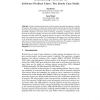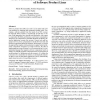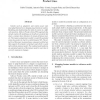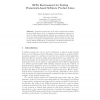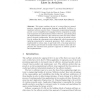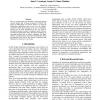JUCS
2008
14 years 8 months ago
2008
: A goal of software product lines is the economical assembly of programs in a family of programs. In this paper, we explore how theorems about program properties may be integrated...
CORR
2010
Springer
14 years 8 months ago
2010
Springer
This article is about a measurement analysis based approach to help software practitioners in managing the additional level complexities and variabilities in software product line...
GPCE
2008
Springer
14 years 9 months ago
2008
Springer
Software product lines (SPLs) are used to create tailor-made software products by managing and composing reusable assets. Generating a software product from the assets of an SPL i...
101
click to vote
SPLC
2007
14 years 9 months ago
2007
Systems such as adaptative and context–aware ones must adapt themselves to changing requirements at runtime. Modeling and implementing this kind of systems is a difficult opera...
SPLC
2007
14 years 9 months ago
2007
Software product lines aim to create highly configurable programs from a set of features. Common belief and recent studies suggest that aspects are well-suited for implementing f...
SPLST
2003
14 years 9 months ago
2003
A software product line can be used to implement a software product family that is a set of software products sharing common features. A natural implementation strategy for a softw...
WICSA
2001
14 years 9 months ago
2001
In this paper, we discuss the notion of variability. We have experienced that this concept has so far been underdefined. Although, we have observed that variability techniques bec...
SPLC
2004
14 years 9 months ago
2004
Abstract. This paper considers the use of a state-of-the-art, generalpurpose, component programming language, specifically ArchJava, to implement software product lines. Component ...
IJCAI
2003
14 years 9 months ago
2003
This is a position paper that describes a long-term ongoing research project that is being developed at ITESM. The project is called Bymx. The aim of Bymx is to integrate informat...
102
click to vote
SSR
2001
14 years 9 months ago
2001
Software product lines have numerous members. Thus, a product line infrastructure must cover various systems. This is the significant difference to usual software systems and the ...
